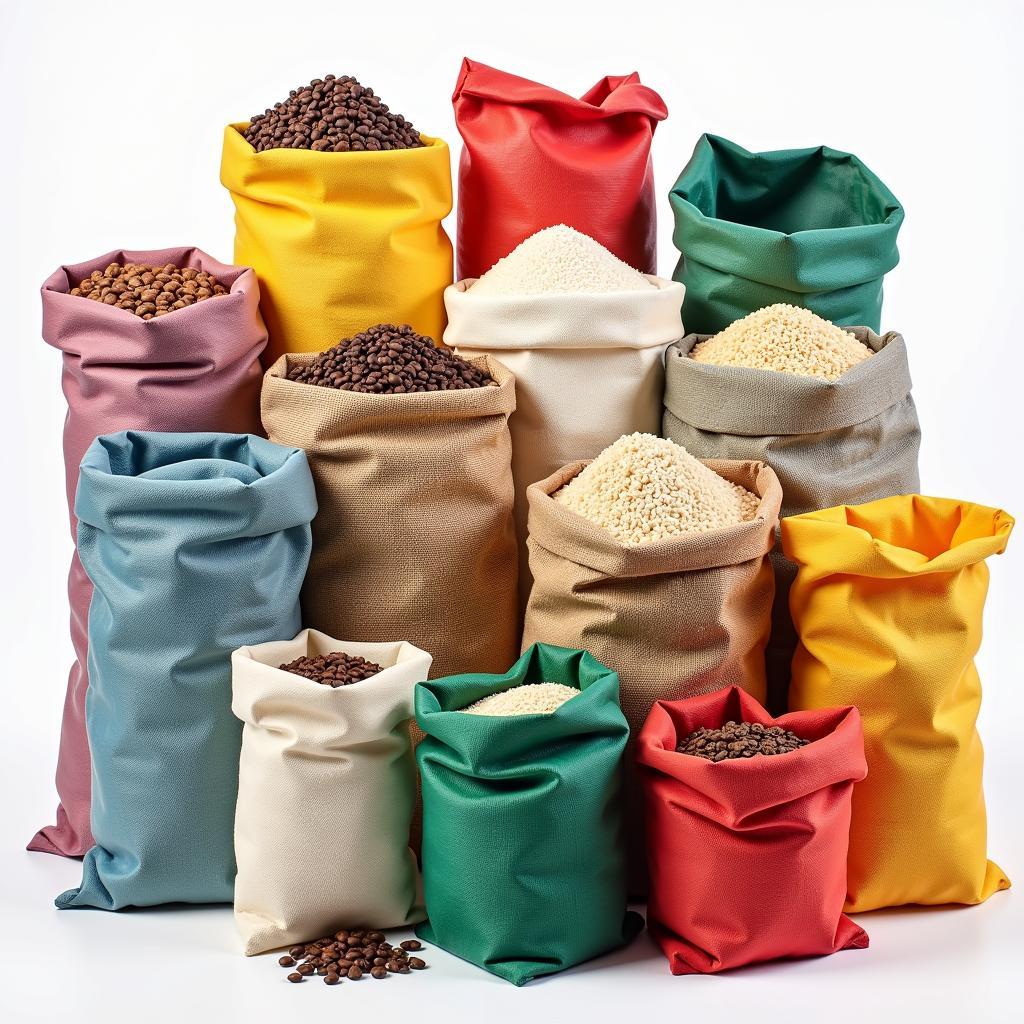Food Sacks have been a staple in kitchens and pantries for generations. From storing pantry staples to transporting groceries, these unassuming containers play a crucial role in our daily lives. But have you ever stopped to consider the diverse world of food sacks and their impact on food preservation, sustainability, and even culinary creativity? Join us as we delve into the history, uses, and benefits of food sacks, uncovering hidden gems and practical tips along the way.
A Brief History of Food Sacks
Before the advent of plastic and paper, our ancestors relied on natural materials for food storage. Woven baskets, cloth bags, and even animal skins were used to protect precious grains, legumes, and other foodstuffs from pests and spoilage. These early food sacks, while simple in design, represented an important step in human civilization, enabling the storage and transportation of food, which was essential for the development of agriculture and settled communities.
The Rise of Modern Food Sacks
 Modern Food Sacks in Different Materials and Sizes
Modern Food Sacks in Different Materials and Sizes
With industrialization came a revolution in food packaging. Paper sacks, introduced in the 19th century, offered a cheaper and more disposable alternative to traditional containers. The later introduction of plastic sacks further revolutionized food storage, offering durability and moisture resistance. Today, food sacks are available in a dizzying array of materials, sizes, and designs, each catering to specific needs and preferences.
Choosing the Right Food Sack: A Guide to Materials
Selecting the appropriate food sack is crucial for maintaining food freshness and preventing spoilage. Here’s a closer look at common materials and their ideal uses:
- Cotton: Breathable and reusable, cotton sacks are perfect for storing dry goods like flour, sugar, and beans.
- Burlap: Known for its durability and rustic charm, burlap is ideal for storing root vegetables like potatoes and onions in a cool, dark place.
- Paper: Lightweight and recyclable, paper sacks are commonly used for storing flour, sugar, and pet food.
- Plastic: Offering moisture resistance and durability, plastic sacks are suitable for storing frozen foods, snacks, and pre-packaged goods.
Beyond Storage: Creative Uses for Food Sacks
Don’t discard those empty food sacks just yet! With a little creativity, you can repurpose them for various purposes:
- DIY Projects: Transform burlap sacks into rustic placemats, shopping bags, or even wall organizers.
- Gardening: Use breathable cotton sacks for storing and transporting gardening tools or creating seed starter pots.
- Home Decor: Add a touch of farmhouse chic by repurposing burlap sacks as decorative planters or storage containers.
Food Sacks and Sustainability: Making Eco-Conscious Choices
In an era of increasing environmental awareness, opting for sustainable food packaging is paramount.
- Choose reusable options: Opt for durable cotton or burlap sacks that can be washed and reused multiple times.
- Recycle responsibly: Dispose of paper and plastic sacks through appropriate recycling programs.
- Support brands with sustainable practices: Look for food companies that prioritize eco-friendly packaging solutions.
Conclusion: Appreciating the Simple Versatility of the Food Sack
From ancient grains stored in woven baskets to modern pantry staples organized in reusable cotton sacks, the humble food sack has played a vital role in our culinary journey. By understanding the different types of food sacks and their uses, we can make informed choices that promote both practicality and sustainability in our kitchens.
Frequently Asked Questions
1. What are the benefits of using cloth food sacks over plastic?
Cloth sacks offer breathability, preventing condensation and mold growth, making them ideal for storing dry goods. They are also reusable, reducing plastic waste.
2. Can I wash and reuse burlap sacks?
Yes, burlap sacks can be hand-washed with mild detergent and air-dried. However, avoid machine washing as it can damage the fabric.
3. Where can I find high-quality, reusable food sacks?
Many online retailers and specialty stores offer a wide selection of reusable food sacks in various materials and sizes.
4. Are paper sacks a sustainable option for food storage?
While paper sacks are recyclable, they are not as durable as cloth sacks and can tear easily. Opt for reusable options whenever possible.
5. Can I freeze food in plastic food sacks?
Yes, many plastic food sacks are designed for freezer storage. However, ensure the sack is specifically labeled as freezer-safe.
For further assistance regarding food storage solutions or any culinary inquiries, please don’t hesitate to reach out to us. Contact our dedicated customer support team at 02437655121 or via email at [email protected]. You can also visit us at our location: 3PGH+8R9, ĐT70A, thôn Trung, Bắc Từ Liêm, Hà Nội, Việt Nam. Our team is available 24/7 to assist you. We also encourage you to explore our website for more insightful articles and information on various food-related topics.